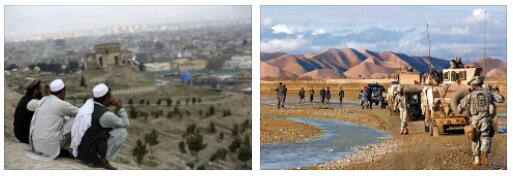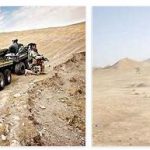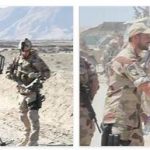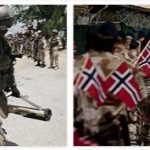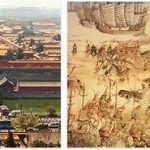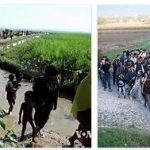4: Basis of power
There are mainly three bases for power in Faryab and hence three different power structures. Each of them is linked to certain resources and has its own lines of conflict. When studying power relations in Afghanistan, a country located in Asia according to thesciencetutor.org, it is important to understand that Afghan politics is much more about individuals than institutions. Although all Afghans have a strong affiliation with their home region, clan and family, Afghan political culture is individualistic . It is up to each individual to build their alliances, form and break bonds of loyalty and thus try to secure their own future.
The traditional basis of power is based on the control of water and land. Water is critically important. Faryab’s boundaries are drawn along the watershed of the Shirin Tagab River and some smaller watercourses. In winter, snow falls in the Hindu Kush Mountains. When it melts in the spring, the rivers fill up and flood west through the valleys of Faryab. During the summer, the rivers dry out, and there is a shortage of water. Control of water thus gives power. The same can be said about grazing land. Livestock farming is an important industry, and there are often disputes over grazing rights. Conflicts are also seen between resident farmers and nomads with grazing animals. These conflicts have strong ethnic dimensions in Faryab.
The second basis of power arose during the war in the 1980s and was consolidated in the 1990s. It is built around powerful warlords. These took over weapons and other resources after the Afghan state collapsed when support from the Soviet Union The warlords also took control of drug trafficking . Some warlords came from wealthy landowner families; they were thus also powerful in the traditional power structure. Others settled up from poor conditions.
The warlord system can best be understood as a pyramid of patron-client relationship. The client is expected to be loyal to his employer and to support him. But the employer also has a responsibility to its clients, both in terms of safety and living conditions. At the top of the pyramids are very powerful warlords such as Abdul Rashid Dostum in Jawzjan and Ismael Khan in Herat. Under them come warlords who dominate a province or some districts, and a step down we find commanders who may master a mantiqa (a collection of villages with a common identity).
The warlords are thus in a network of mutual obligations , which can perhaps best be compared with the conditions in feudal Europe in the Middle Ages. Thus, even very local conflicts can spread quickly if the parties’ networks are mobilized. In Faryab, a lot of time and effort was spent on disarming the warlords’ militias from 2005. At the same time, Junbesh was also changed from an almost purely military organization to a political movement. Nevertheless, there is little doubt that most of the warlords, and Junbesh, could have mobilized relatively large forces in Faryab at any time.
The third power structure is based on the position of the new state apparatus,which has been built up with the support of the West since 2001. At the provincial level, the policy is formulated in negotiations between local forces and representatives of the president and the ministries in Kabul. The governor is not elected locally, but appointed by the president. The governor’s local counterpart is a provincial council in which the representatives are elected in the province. It is almost totally dominated by Junbesh, who in turn is dominated by Uzbek leaders with a background as warlords.
There have obviously been strong tensions between the state apparatus on the one hand and Junbesh on the other. Since 2005, the state apparatus, with support from the international forces and especially from Norway, has received significantly greater resources. The old warlords of Junbesh have been under pressure. But they have still had a great influence on the distribution of development funds in the province. They have used them to override the Pashtuns , who have thus received significantly less assistance than other groups.
5: Corruption, power struggles and state-building
The head of security in each province is appointed by the Minister of the Interior. As chief of police, he has great power. But both the Afghan National Police (ANP) and the border police are characterized by corruption . It seems quite certain that former security chiefs in Faryab have been heavily involved in drug trafficking. The current head of security has also been accused of such activities. A leading general in ANA’s 209th Corps has accused the police in Faryab of corruption and illegal taxation of the civilian population.
There have also been cases where police and army have shot at each other . This is, of course, a fundamental problem for state-building both in Faryab and in Afghanistan in general. We also see how military forces – Afghans with ISAF support – are entering areas to spread state power and clearer areas for civilian development, such as a police station. Such an increased state presence has in turn incurred increased Taliban activity.
If you build a police station in a district that has previously been without, and this police either take over the criminal activity or illegally tax legal activity, then it can not be surprising if local forces attack the police. State-building where this happens often leads to conflict, it does not dampen it. Thus, the ethnic polarization between the Pashtuns on the one hand and especially the Uzbeks on the other is clear. The ethnic lines of conflict run through all three power structures.
Since Dostum entered into an alliance with Karzai in 2009, Junbesh has strengthened its position. A brigade has been established with headquarters in Meymaneh in charge of Faryab, Jowzjan and Sari-Pul. Hardly anyone will be surprised if a large proportion of officers are members of Junbesh. In some districts, armed local militias (arbaki) have been established which have been given public status and some state support.
But the villages also have to endure extra taxation to finance the equipment. In Faryab, it has mostly been men with close ties to Junbesh who have been tasked with building up such militias. If Junbesh uses its strengthened position of power in the same way as before, the Pashtun groups in Faryab will be more vulnerable. In that case, we must expect the Taliban to strengthen its position as a defender of the Pashtuns in the province.
